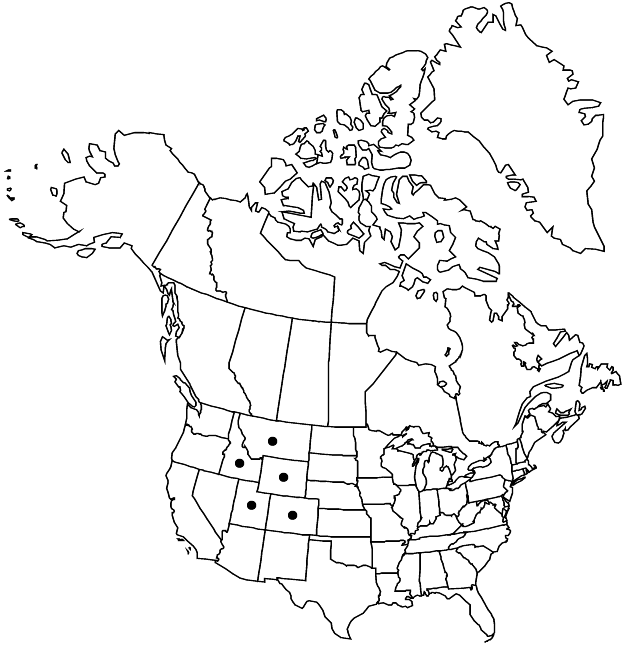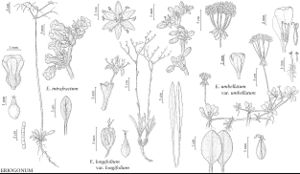Eriogonum umbellatum var. umbellatum
Herbs, spreading mats, 1–3.5 × 2–6 dm. Aerial flowering stems erect, 1–2.5(–3) dm, tomentose to floccose, without one or more leaflike bracts ca. midlength. Leaves in loose rosettes; blade usually elliptic to ovate, 1–2.5(–3) × 0.5–1.5(–1.8) cm, white- to gray-lanate abaxially, less so to floccose or glabrous and green adaxially, margins plane. Inflorescences umbellate; branches 0.3–2.5(–8) cm, without a whorl of bracts about midlength; involucral tubes 2–3 mm, lobes 1.5–3 mm. Flowers 4–7(–8) mm; perianth bright yellow. 2n = 80.
Phenology: Flowering Jun–Sep.
Habitat: Sandy to gravelly flats and slopes, mixed grassland and sagebrush communities, scrub oak and montane conifer woodlands
Elevation: (1000-)1200-2700(-3100) m
Distribution

Colo., Idaho, Mont., Utah, Wyo.
Discussion
Variety umbellatum is widespread and rather common. Overlying a portion of the range of var. umbellatum is the glabrous-leaved var. aureum, but the latter occurs over a greater area and mainly much farther to the west. Still, clear distinction between the two is not always possible. Variety umbellatum is found in cultivation, especially in European gardens.
Selected References
None.
